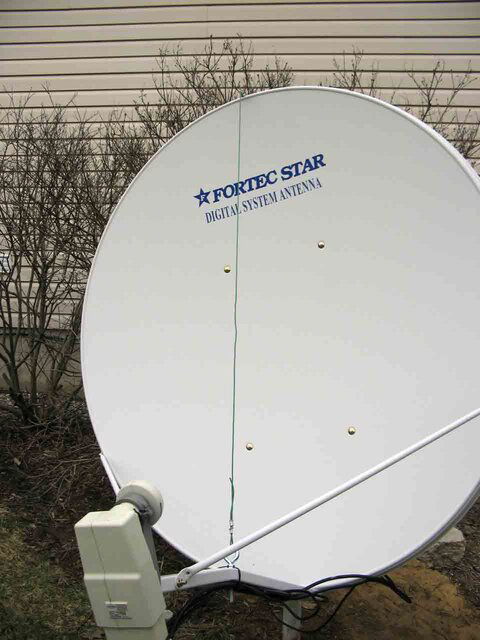Well,
With some time on my hands, I thought I'd confuse myself, and I've succeeded.
I thought I would check out my lnbf alignment , and thought that I'd start by looking at the focal length for my 1.2M dish, and setting that right.
That pretty much can't happen.
The focal length is spec'd at 28.3 " and my lnb is out at 36" from the center of the dish( which is where it's pointing ). I suppose I COULD drill a new hold in the support arm 8" closer and mount the lnbf there, but it seems kinda drastic. I wonder if I have somehow become confused ( imagine that !).
Coincidentally, the distance from the base of the dish , at the lnb support arm to the face of the lnbf is about 28.3 " . Could THAT be where the magic focal length number in the specs came from ?
All the explanations that I've run across are for Prime Focus dishes, and they don't directly relate to offset dishes.
 ????
????
With some time on my hands, I thought I'd confuse myself, and I've succeeded.
I thought I would check out my lnbf alignment , and thought that I'd start by looking at the focal length for my 1.2M dish, and setting that right.
That pretty much can't happen.
The focal length is spec'd at 28.3 " and my lnb is out at 36" from the center of the dish( which is where it's pointing ). I suppose I COULD drill a new hold in the support arm 8" closer and mount the lnbf there, but it seems kinda drastic. I wonder if I have somehow become confused ( imagine that !).
Coincidentally, the distance from the base of the dish , at the lnb support arm to the face of the lnbf is about 28.3 " . Could THAT be where the magic focal length number in the specs came from ?
All the explanations that I've run across are for Prime Focus dishes, and they don't directly relate to offset dishes.


